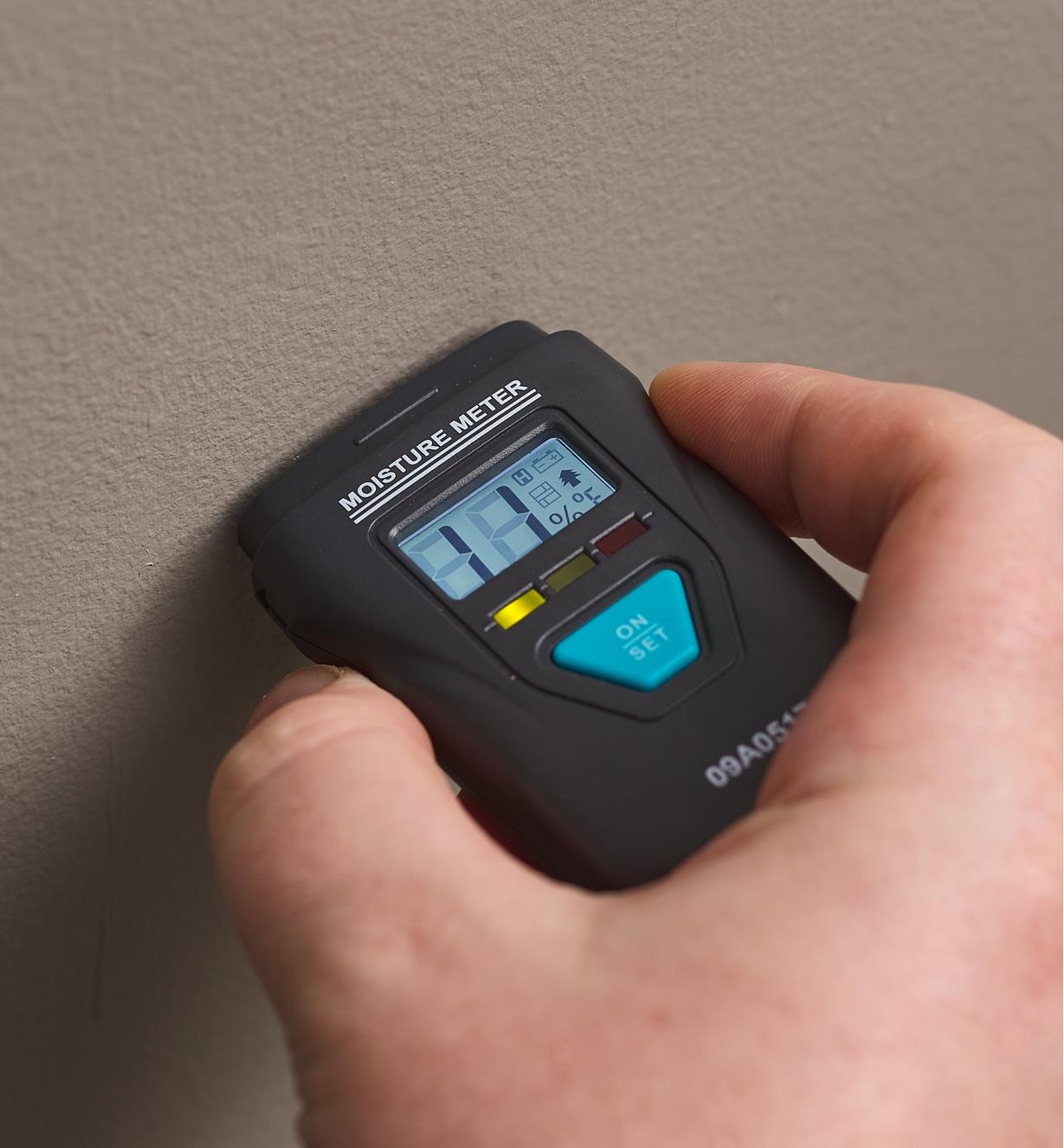The Scientific Research Behind Moisture Meters: How They Function and Why They're Vital
Look Into the World of Moisture Meters: Everything You Need to Know
In the world of moisture meters exists a world of precision and practicality that usually goes unnoticed. Comprehending how moisture meters run, the various kinds available, and their varied uses can shed light on their value in ensuring high quality and performance.
Just How Moisture Meters Work
Moisture meters run by measuring the electric conductivity or capacitance of products to establish the dampness web content present. These meters are vital devices throughout various markets, including agriculture, construction, and woodworking. By utilizing different approaches such as pinless or pin-type modern technology, wetness meters give precise readings that assist experts make educated decisions.
Pin-type dampness meters function by placing the sharp pins into the product being examined. On the various other hand, pinless wetness meters utilize electro-magnetic signals to scan a bigger location without creating any damage to the material's surface area.
Regardless of the approach made use of, dampness meters play a vital role in avoiding issues such as mold growth, architectural damages, or product defects triggered by excess moisture. Recognizing just how these meters work is vital for making sure the top quality and integrity of materials in various applications.
Kinds Of Moisture Meters
Provided the critical function dampness meters play in numerous sectors, it is necessary to recognize the different kinds readily available to professionals for properly analyzing wetness levels - Moisture Meter. There are mostly two major kinds of wetness meters: pinless and pin-type wetness meters

On the various other hand, pinless wetness meters utilize electro-magnetic sensing unit plates to scan a larger area of the product without creating any kind of damages. This kind appropriates for promptly scanning large areas and is commonly utilized for floor covering, wall surfaces, and ceilings. Pinless meters are convenient for taking analyses on finished surfaces without leaving any type of noticeable marks.
Both sorts of moisture meters have their advantages and are picked based on the certain needs of the task handy. Comprehending the differences between these types is important for professionals to make exact moisture evaluations.
Applications Throughout Industries
Building specialists count on dampness meters to evaluate the wetness levels in building materials like drywall, concrete, and timber, which is vital for preserving structural honesty and avoiding problems like rot or mold. The flooring market utilizes moisture meters to measure the wetness material in subfloors description prior to installing various flooring coverings, stopping pricey problems due to excess dampness. In the food industry, moisture meters are utilized to monitor and regulate moisture degrees in items such as grains, nuts, and dried fruits to maintain freshness and high quality.
Tips for Making Use Of Wetness Meters
Utilize the moisture meter's calibration setups to make sure exact readings when gauging the wetness material blog in various products. Additionally, make certain the meter is established to the correct moisture variety for the product you are gauging to obtain the most specific results.
When utilizing a pin-type dampness meter, put the pins to the suitable depth suggested for the product being evaluated. This ensures that the moisture readings are drawn from the correct deepness within the product, offering a more precise representation of its dampness content. For pinless dampness meters, bear in mind to keep proper call with the product's surface to get reliable analyses.
Consistently check and replace the batteries in your dampness meter to stop unreliable readings as a result of reduced power. When not in usage to lengthen its life-span and preserve its accuracy, Store the meter in a completely dry and secure site link place. By complying with these pointers, you can optimize the efficiency of your wetness meter and obtain accurate wetness web content measurements throughout various products.
Maintenance and Calibration
To make sure the accuracy of moisture web content measurements, normal upkeep and calibration of the moisture meter are necessary action in its appropriate functioning. Maintenance involves maintaining the wetness meter tidy and complimentary from debris that might influence its readings. It is very important to comply with the maker's guidelines for cleaning up to avoid damage to the device. In addition, regular calibration is necessary to verify the precision of the analyses. Calibration readjusts the moisture meter to make certain that it supplies trustworthy and constant results.
Calibration needs to be performed regularly, specifically if the dampness meter is used regularly or in critical applications where specific measurements are needed. Numerous wetness meters come with calibration tools or can be calibrated by professional services. Moisture Meter. It is recommended to maintain a log of calibration days and results to track the efficiency of the dampness meter with time. By maintaining and calibrating the wetness meter frequently, individuals can trust the precision of the wetness web content dimensions acquired.
Verdict

In conclusion, wetness meters play an essential role in various markets by precisely gauging the moisture web content of materials. Comprehending exactly how these tools function, the various kinds available, and proper maintenance and calibration are necessary for acquiring dependable results. Whether in building, manufacturing, or agriculture, the use of moisture meters aids guarantee quality assurance and efficiency in processes.

In final thought, wetness meters play a crucial role in numerous sectors by properly gauging the wetness content of materials.